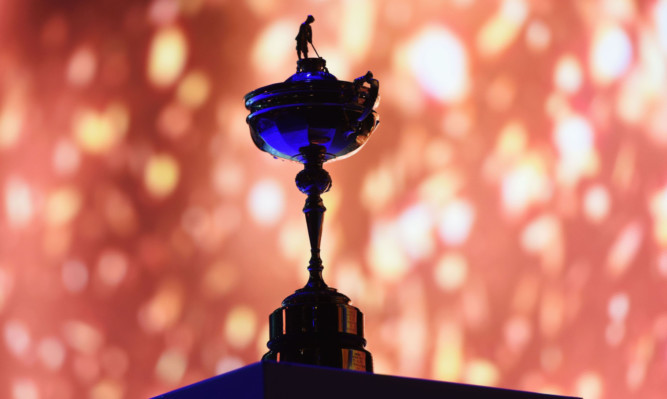In true Spinal Tap tradition, the Ryder Cup in Europe goes up to 11.
Nigel Tufnell, the “classically trained” lead guitarist in the infamous metal band made legend in the 1980s “rockumentary”, had his amplifier volume go up one more than the usual 10 to demonstrate how loud “The Tap” were.
Similarly, if slightly less loudly, the Ryder Cup on this side of the Atlantic takes your average major golf championship and ramps up the hype to new levels.
Especially here. The European Tour now cheerfully admit it’s unlikely there would be a Tour at all without the quadrennial cash cow they are milking shamelessly this week.
The Ryder Cup is possibly the only thing that Europe outdoes in size compared to America. There is an intensity and a scale about a Ryder Cup here that dwarves the versions held in the USA.
In Chicago two years ago, until a day or two before the event you’d have struggled to realise it was even happening. My friendly guard from Homeland Security who kept me waiting two hours at customs asked me if the Ryder Cup was “a sailing competition”. It wasn’t until Wednesday that billboards started to appear.
Compare that to Scotland, which has been festooned with Ryder Cup stunts and paraphernalia for the best part of two years. Had it not been for the competing interest of the referendum, we might have all been overwhelmed.
The crowds were large in Chicago, and suitably raucous. The merchandising tent was big and, with reasonable prices, stripped clean by the end of every day. Hospitality was considerable, but you could easily drive into Medinah and park on a relief course without much delay.
At Gleneagles this week the merch tent is huge, twice the size of Medinah’s, and the prices are doubled to match. Multi-storey hospitality superstructures are built all over the course. And countless fleets of buses some getting lost in the Perthshire backroads, amazingly are bringing the majority of fans in from Glasgow, Perth and Balado.
And the fans themselves? 40,000 a day, pouring out of the park and ride buses, singing, cheering missed putts on the competition days. It’s quite unlike anything in golf.
In recent times, the Ryder Cup has matched this frenzy with suitable drama to keep the pot boiling and to stoke the obsession of fans. In Europe, such is the love of the event it seems that the financial floodgates will keep paying out for the Tour forever.
But this event has become lop-sided to a degree even more pronounced than the seven out of the last nine editions won by the Europeans.
Quite simply, we in Europe care more emotionally as well as financially – about this than the Americans. A whole lot more.
It’s unquestionably a reason witness Paul Azinger’s famous quote of the Ryder Cup being in European golf’s lifeblood why Europe has been so successful at the USA’s expense.
But it takes two to dance this lucrative tango. And you can’t help feeling that if the Europeans keep caning the Americans, their relatively dispassionate view of the contest will dissolve into complete indifference.
If that happens, the financial well-being of the entire European Tour comes under threat. It’s an exceedingly delicate balance.
